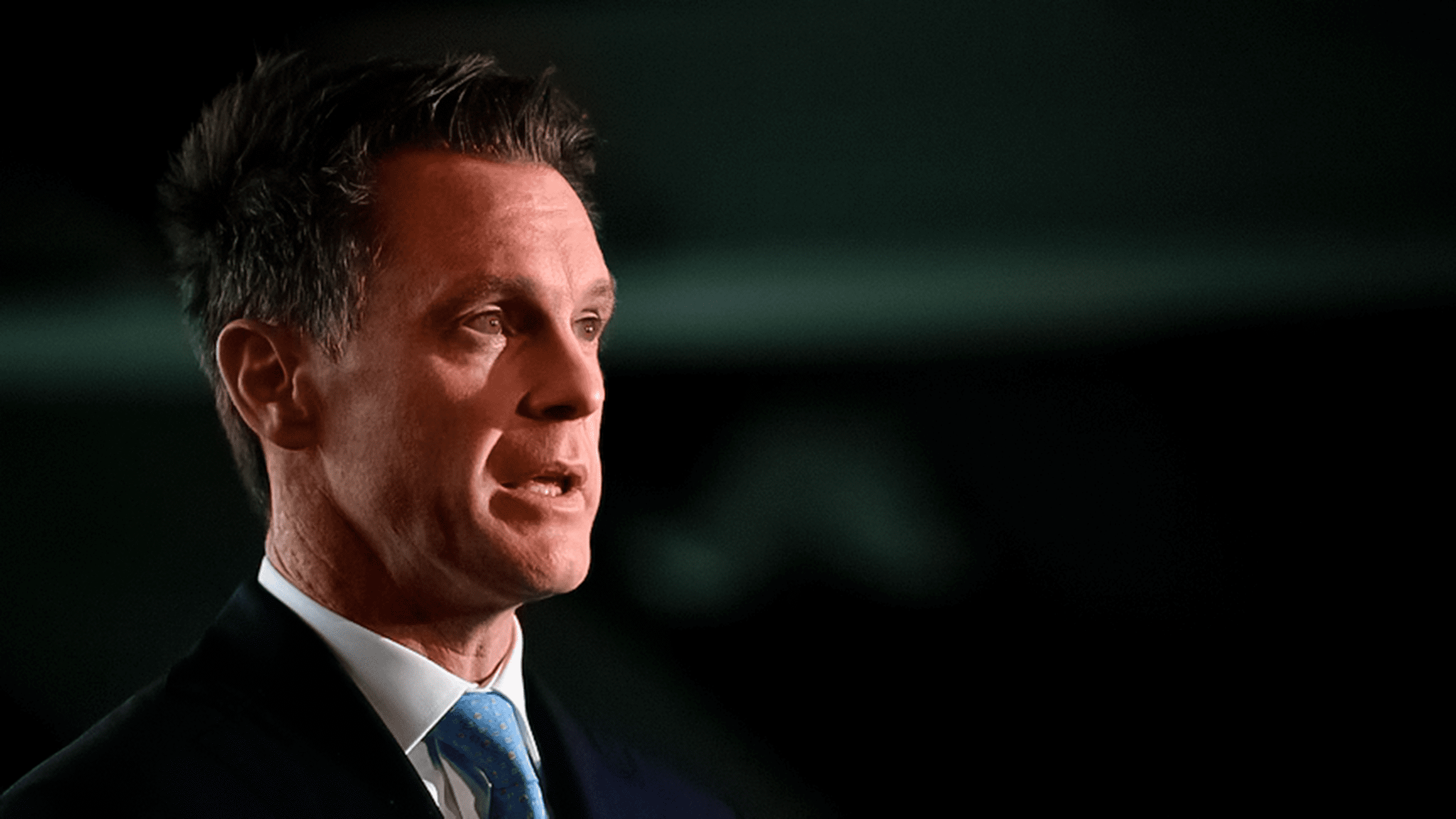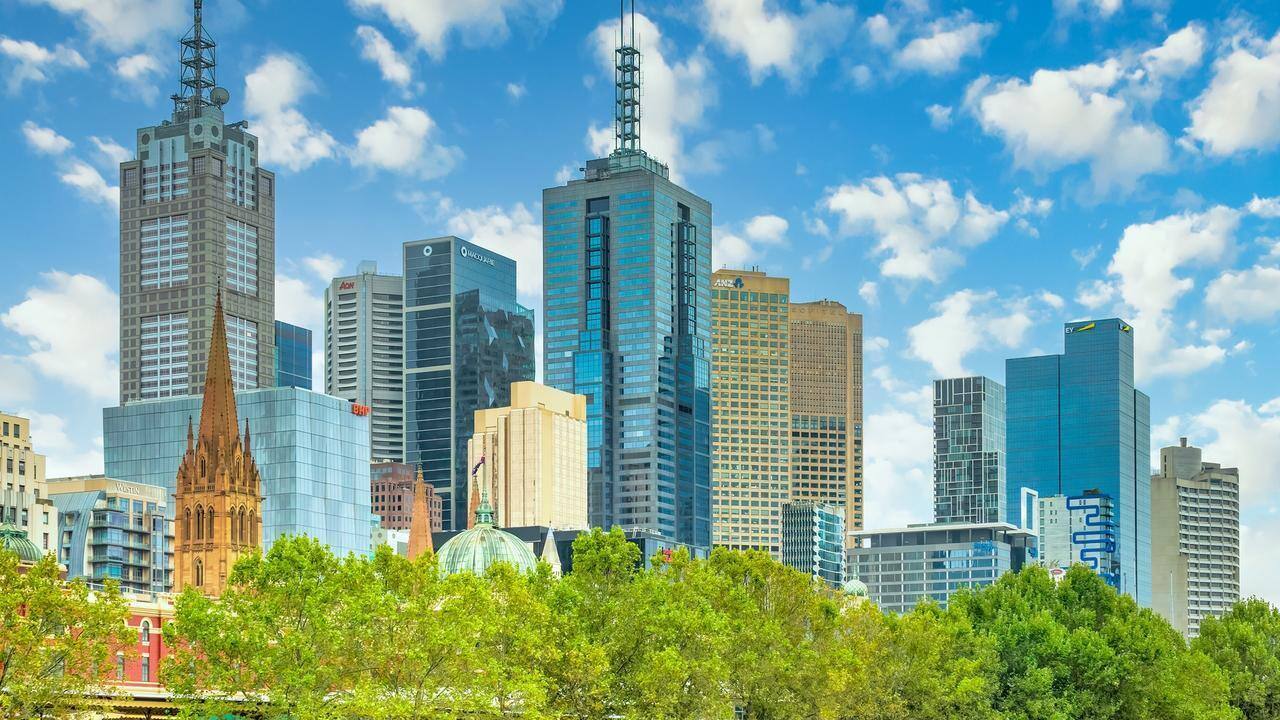Features > Property News & Insights > Housing Trends
Are New South Wales’ housing targets a pipe dream?

Image from Bianca De Marchi, AAP
KEY POINTS
- The NSW government has set a goal to build 377,000 new homes over the next five years, with about 70% of these homes to be constructed in the Greater Sydney area
- Premier Chris Minns wants to shift the housing development burden from Western Sydney to the city’s east and wealthier areas closer to Sydney’s CBD
- Local Sydney councils have expressed significant concerns about meeting these new housing targets without substantial new state government funding for critical infrastructure
In an ambitious move to tackle the ongoing housing crisis, the New South Wales government has unveiled a target to build 377,000 new homes over the next five years.
With the bulk (about 70%) of these homes earmarked to be built in the Greater Sydney area, Premier Chris Minns has said he wants a “fair rebalance” of housing development in Australia’s largest city.
However, there’s been considerable push-back from local Sydney Councils, with one local government area earmarked for significant development saying it cannot deliver the new housing targets without the state government agreeing to spend hundreds of millions of dollars more to develop critical infrastructure.
Look East, not West…
Chris Minns’ “rebalance” is an attempt to move the new housing burden in Sydney from west to east, with wealthy, developed areas closer to the CBD expected to shoulder more in-fill and high-density housing.
"One of the reasons why (previous) housing targets have failed is that we've placed an enormous burden on Western Sydney, and by any objective measure, we have not provided the infrastructure to cope with that increase in housing," Mr Minns said during a speech to launch the new plan.
"We're seeking to rebalance the future of Sydney's growth, towards established infrastructure… infrastructure that has been built by generations of taxpayers, closer to the eastern seaboard."
Under the Premier’s new plan, council areas that serve suburbs in and near the CBD and the coast would account for 41% of new planned homes, while Sydney’s “middle ring”, which includes areas like Parramatta, Canterbury-Bankstown, Blacktown and the Georges River would deliver 37%.
The 22% of remaining homes would be built in council areas in Sydney’s West.
82% of the state’s new housing targets are earmarked for “infill areas,” with just 18% coming from “greenfield” locations.
"The west will continue to build new homes—but other parts of Sydney will have to share the load," Mr Minns declared.
The new plan sees existing urban plans updated.
For example, the City of Sydney council area, which includes Sydney CBD and 32 surrounding suburbs, such as Ultimo, Newtown, Alexandria, Redfern, and Surry Hills, currently targets developing 14,000 to 15,000 new homes.
That’s been updated to 18,900.
Tiny Woollahra Council, which takes in some of Australia’s most expensive real estate in suburbs like Bellevue Hill, Darling Point, and Double Bay, has been told it has to facilitate the building of 1,900 homes—more than three times its previous target of 500 to 600 new dwellings.
Mayor Richard Shields described the housing “demands” as being “catastrophic for our community.”
“We are already one of the most heavily populated areas in Sydney, with 77% medium and high-density housing in an area just 12 km²,” he said.
The rationale
How times have changed.
In March 2000, former New South Wales Premier Bob Carr famously declared that Sydney was “full”.
At the time, the city’s population was around 4,000,000.
24 years later, and with the harbour city now home to 1.1 million more people, the state government's clear message is that Sydney is not “big enough.”
With the most expensive property prices in Australia coupled with a housing shortage, Sydney has been losing people in the prime of their lives to other cities and has warned it risks becoming the “city with no grandchildren.”
A recent New South Wales Productivity Commission report found between 2016 and 2021, Sydney lost twice as many people aged 30 to 40 as it gained.
In the state government’s words, “These are the people who open businesses, have families, build our communities and contribute to the local economy.”
The state government says that to confront the housing crisis “head on,” means building more well-located homes close to infrastructure, transport links, amenities and work opportunities.
A cry from the Hills
Interestingly, one of the loudest and most detailed complaints about the state government’s new housing targets has not come from an inner-city “NIMBY” Council, but from one of the most pro-development local government areas in the nation.
In a lengthy open message to the state government, the Mayor of The Hills Shire Council in Sydney’s booming outer north-west declared he and his fellow councillors “are opposed to these targets, which are unfeasible for councils and the construction industry across Sydney.”
While Peter Gangemi did indicate that he believed overseas migration was too high and the Federal and State governments hadn’t done enough to train construction workers, his main complaint centred around existing infrastructure to support new homes.
“There is plenty of land already zoned for housing across Sydney, and there are plenty of DAs waiting to be enacted,” he said.
“In The Hills, we already have enough land zoned for an additional 50,400 homes.”
“The Government needs to significantly invest in sewer, water, power, roads and other key infrastructure projects that will unlock the housing that is already zoned and approved,” he said.
Councillor Gangemi noted that as part of its plan, the Minns Government has offered $200 million in infrastructure grants for New South Wales councils if they meet their housing completion targets.
However, he says that in just one suburb in his local government area, Box Hill, the infrastructure shortfall alone is an estimated $122 million.
“There is already a lag in the provision of Government infrastructure to meet the needs of the existing population that is already here,” Mayor Gangemi said.
“We now have the highest housing targets in NSW, all while growth communities like those in Box Hill are buckling under the pressure that comes with a lack of funding for parks, schools and roads.”
“We already have the most overcrowded schools in the state, with 46 per cent over their enrollment cap by more than 100+ students.”
Councillor Gangemi also pointed out that The Hill Shire was home to a number of sites run by the New South Wales state government’s own developer, Landcom, which already had approved development applications.
“They could lead from the front and build on them immediately,” he said.
The bottom line
While setting ambitious housing targets is admirable, the bottom line is that Australian state governments are responsible for creating and funding much of the infrastructure to support that new housing, whether it be in “greenfield” or “in-fill” areas.
It’s all very well lecturing Councils to rezone more land and approve more homes and higher-density dwellings, but that has to be backed up with sewerage, water, and power infrastructure, transport, and community facilities like new schools, parks, and libraries.
That is precisely what hefty state government taxes like stamp duty, payroll tax and developers’ levies are for.
If Hills Shire Mayor Peter Gangemi is right, existing areas of Sydney with substantial development are not currently being provided with many basic services.
So you want 377,000 more homes in just five years?
Show us the money, Mr Minns.
Stay Up to Date
with the Latest Australian Property News, Insights & Education.




.png?width=292&height=292&name=Copy%20Link%20(1).png)
 SIGN UP FOR FREE NEWSLETTER
SIGN UP FOR FREE NEWSLETTER








.jpg?width=1920&height=1080&name=Warning%2c%20You%20Might%20Be%20Facing%20Higher%20Taxes%20Soon%20(1).jpg)





.png?width=1920&height=1080&name=Rate%20Drops%20Signal%20BIGGEST%20Property%20Boom%20in%20DECADES%20(1).png)

.jpg?width=1920&height=1080&name=Labor%20vs%20Liberal%20These%20Housing%20Policies%20Could%20Change%20the%20Property%20Market%20Forever%20(1).jpg)
.jpg?width=1920&height=1080&name=QLD%20Slashes%20Stamp%20Duty%20Big%20News%20for%20Investors%20%26%20Home%20Buyers%20(1).jpg)
.jpg?width=1920&height=1080&name=Trump%20Just%20Slapped%20Tariffs%20%E2%80%93%20Here%E2%80%99s%20What%20It%20Means%20for%20Australia%20(1).jpg)
.jpg?width=1920&height=1080&name=Federal%20Budget%202025%20More%20Debt%2c%20No%20Housing%20%E2%80%93%20Here%E2%80%99s%20What%20You%20Need%20to%20Know%20(1).jpg)
.jpg?width=1920&height=1080&name=Australias%20Housing%20Crisis%20is%20about%20to%20get%20MUCH%20Worse%20(New%20Data%20Warns).jpg)
%20(1).jpg?width=1920&height=1080&name=Australias%20RENTAL%20CRISIS%20Hits%20ROCK%20BOTTOM!%20(2025%20Update)%20(1).jpg)
%20(1).png?width=1920&height=1080&name=Is%20Adelaide%20Still%20a%20Good%20Property%20Investment%20(2025%20UPDATE)%20(1).png)
.jpg?width=1920&height=1080&name=RBA%20Shocks%20with%20Rate%20Cuts!%20What%E2%80%99s%20Next%20for%20Property%20Investors%20(1).jpg)
%20(1).jpg?width=1920&height=1080&name=I%20Predict%20The%20Feb%20Rate%20Cut%20(My%20Price%20Growth%20Prediction)%20(1).jpg)
.png?width=1920&height=1080&name=Why%20Property%20Prices%20Will%20Rise%20in%202025%20Market%20Predictions%20(1).png)
.jpg?width=1920&height=1080&name=Why%20Investors%20Are%20Choosing%20Apartments%20Over%20Houses%202%20(1).jpg)
.jpg?width=1920&height=1080&name=Why%20Rate%20Cuts%20Will%20Trigger%20A%20Property%20Boom%20(1).jpg)
.jpg?width=1920&height=1080&name=Retire%20On%202Million%20With%20One%20Property%20(Using%20SMSF).jpg)
.jpg?width=1920&height=1080&name=4%20Reasons%20Why%20You%20Should%20Invest%20in%20Melbourne%20Now%20(1).jpg)
%20(1).jpg?width=1920&height=1080&name=Old%20Property%20vs%20New%20Property%20(Facts%20and%20Figures%20Revealed)%20(1).jpg)
%20(1).jpg?width=1920&height=1080&name=Will%20The%20New%20QLD%20Govt%20Create%20a%20Property%20Boom%20or%20Bust%20(My%20Prediction)%20(1).jpg)
%20Scott%20Kuru%20(1).jpg?width=1920&height=1080&name=Inflation%20Hits%20Three-Year%20Low%20(Will%20RBA%20Cut%20Rates%20Soon)%20Scott%20Kuru%20(1).jpg)
.jpg?width=1920&height=1080&name=How%20to%20Buy%20Investment%20Property%20Through%20SMSF_%20The%20Ultimate%20Guide%20(1).jpg)
.jpg?width=1920&height=1080&name=Victoria%20Slashes%20Stamp%20Duty%20Melbourne%20Set%20to%20Boom%20Scott%20Kuru%20(1).jpg)
.png?width=1571&height=861&name=Are%20Foreign%20Buyers%20Really%20Driving%20Up%20Australian%20Property%20Prices%20(1).png)
.jpg?width=1920&height=1080&name=The%20Single%20Factor%20That%20Predicts%20Property%20Growth%20Regions%20(1).jpg)
%20Scott%20Kuru%20(1).jpg?width=1920&height=1080&name=My%20Prediction%20On%20Rates%20%26%20Negative%20Gearing%20(Market%20Crash)%20Scott%20Kuru%20(1).jpg)

-1.png?width=1920&height=1080&name=Major%20Banks%20Cut%20Rates%20Will%20RBA%20Follow%20Suit%20(Sept%20Rate%20Update)-1.png)
%20Scott%20Kuru-1.png?width=1920&height=1080&name=Rate%20Cut%20Coming%20What%20New%20Zealands%20Move%20Means%20for%20Australia%20(Sept%20Prediction)%20Scott%20Kuru-1.png)
%20(1).jpg?width=1920&height=1080&name=Buy%20when%20the%20interest%20rates%20are%20high!%20(Why%20you%20must%20buy%20now!)%20(1).jpg)
.jpg?width=1920&height=1080&name=Carms_Revised%20Taxes%20Due%20Aug%209%20YT%20Thumbnail02%20(1).jpg)
.jpg?width=1920&height=1080&name=Carms_Too%20Little%20Too%20Late%20Aug%207%20YT%20Thumbnail01%20(1).jpg)









.jpg?width=1920&height=1080&name=Carms_Rate%20Drop%20In%20July%20Jun%2010%20YT%20Thumbnail02%20(1).jpg)
.jpg?width=1920&height=1080&name=Carms_Own%20a%20Property%20V6%20Jun%205_YT%20Thumbnail%20(1).jpg)









.png?width=1920&height=1080&name=Artboard%201%20(3).png)






.jpg?width=1920&height=1080&name=YT%20thumbnail%20%20(1).jpg)

